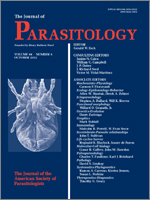The fleas of the Malacopsyllidae are known only by their adults. In this study, we describe the eggs of Malacopsylla grossiventris and Phthiropsylla agenoris and compare their surface ultrastructure using scanning electron microscopy. Eggs of both flea species are similar in their general appearance, i.e., the presence of disks and absence of lateral aeropyles, but they differ in size, texture of the surface, and number of micropyles and aeropyles. In addition, the eggs of M. grossiventris and P. agenoris are larger (719–800 µm) than most of the flea eggs known (<600 µm), and the length/width ratio is 2.0, while it varies between 1.6 and 1.8 in other species. As opposed to other large species, malacopsyllids have expandable (telescoping) abdomens that display growth. It is possible that a clutch of eggs has more than 2 eggs. Females of M. grossiventris were observed fixed with their mouthparts to the skin of their hosts. Indeed, some of these specimens were observed copulating on the venter of their hosts. These results contribute to the knowledge about the biology of malacopsyllids.
How to translate text using browser tools
1 October 2012
Surface Ultrastructure of the Eggs of Malacopsylla grossiventris and Phthiropsylla agenoris (Siphonaptera: Malacopsyllidae)
M. C. Ezquiaga,
M. Lareschi
ACCESS THE FULL ARTICLE

Journal of Parasitology
Vol. 98 • No. 5
October 2012
Vol. 98 • No. 5
October 2012




